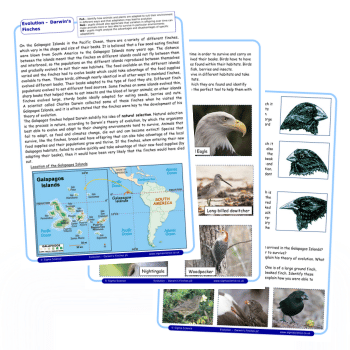This Darwin’s finches KS2 worksheet introduces children to the idea of evolution. They’ll look at Charles Darwin’s study of finches on the Galapagos Islands. This is reportedly one of the key elements behind his theory of natural selection.
Darwin’s finches KS2
The worksheet explains that the distance between the islands meant that the birds could not fly from one to another. Therefore they could not interbreed. So, over time, the finches on each island evolved in different ways to suit their habitats and food supplies.
Some had sharper beaks for eating bugs, others strong, sturdy beaks for breaking into nuts, for example.
This worksheet explains how three different types of finches evolved on the Galapagos Islands – large ground finches, small ground finches and sharp-beaked finches.
It contains images of other birds and asks pupils to consider why they may have evolved the way they have. These include:
- Pelicans
- Bald eagles
- Toucans
- Long-billed dowitchers
- Nightingales
- Woodpeckers
Learning objectives
- Identify how animals and plants are adapted to suit their environment in different ways and that adaptation may lead to evolution
- Appreciate that variation in offspring over time can make animals more or less able to survive in particular environments
- Analyse the advantages and disadvantages of specific adaptions
Find out more about Sigma Science.











